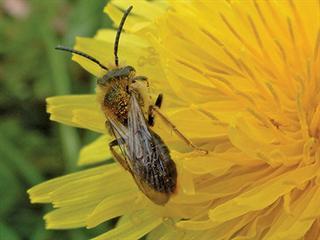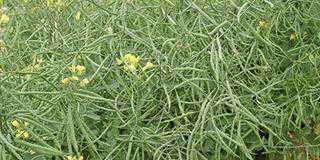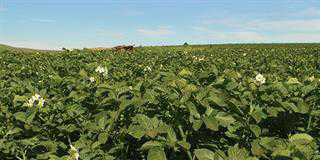
The neem, Azadirachta indica, is an evergreen tree related to the mahogany tree and native to southern Asia, although it grows in other parts of the world. Neem seeds are rich in oil, the processing of which has given rise to many products.
For use as a pesticide, the oil is extracted from the seeds, first by crushing them, and then soaking them in water or alcohol. The extract is then converted into an insecticidal soap.
Azadirachtin
One of the active ingredients in neem oil soap is the chemical azadirachtin. First isolated from the neem seed in 1968, it is now one of the most common active ingredients in many broad-spectrum insecticides. Azadirachtin does not work simply as a contact insecticide (absorbed through the skin, leading to dehydration), or ingestion-based insecticide (reduces the insect’s desire to feed), but attacks in a number of other ways:
- It disrupts the sensory receptors in the mouth, inhibiting the tasting of food and therefore its ingestion.
- It works as a growth-inhibitor by preventing the larvae or nymphs from moulting.
- It inhibits egg development.
- It gives off an odour that disrupts the insect’s normal settling behaviour and inhibits the female’s desire to lay eggs on the leaves.
Inertness and low toxicity
Unlike many synthetic insecticides, azadirachtin has been shown to remain inert in soil and have low toxicity levels in mammals. Furthermore, insects have little build-up of resistance to it, even over several generations. Clinical studies have also demonstrated that azadirachtin poses no major threat to humans. Neem products can be used on a variety of grain, fruit and vegetable crops, and on pests associated with the commercial greenhouse environment. In many cases, a single low dose is all that is required.
Over the years, trials have shown neem oil to be effective against more than 200 species of insect pest, ranging from aphids and squash bugs to caterpillars, locusts and beetles. In most cases, neem oil is harmless to many of the predatory species, such as spiders, ladybirds, and parasitic wasps, both in larval and adult stages. For this reason, it can prove a valuable resource when used in conjunction with an integrated pest management system.
Application
Azadirachtin-based insecticides tend to be effective only at certain stages of a pest’s life-cycle. For example, while controlling adult aphids, they do not work against adults in every case. In some instances, they are effective only at the egg stage. In most cases, they work during the intermediate, larval (caterpillar) stage or the immature phase.
Neem products should be applied well before pest levels reach epidemic proportions. The sooner they are used, the less damage is done to the plants because the pests are removed before establishing themselves. Applying neem insecticide to plants in the greenhouse before transplanting them to the field is particularly effective at reducing pest numbers. It can also be introduced to the plants in a much less concentrated form through a drip irrigation system. This too will eliminate pests significantly.
Paul Donovan is a biologist who has worked with reptiles and insects in zoological collections in the UK. He is based in Botswana, where he advises farmers on the use of biological control agents. Email him at [email protected].













